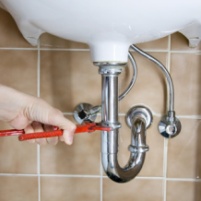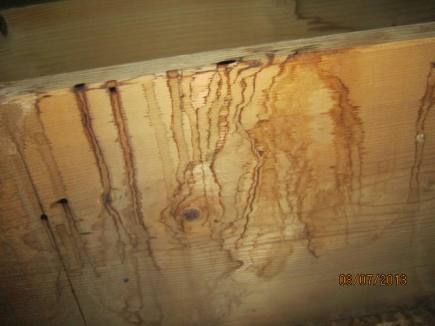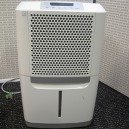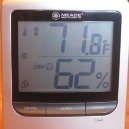Find a pre-screened local mold removal specialist Free Estimate
Find a Mold Specialist Now
Click or Call, Toll-Free 24/7
How To Prevent Mold
In The Home
Let’s talk about how to prevent mold for a moment. You’ve probably heard a lot about the risks of toxic household mold and about the costs of mold removal, but mold prevention is a topic discussed less frequently. If you know how to prevent the growth of mold, however, and take some relatively simple steps to prevent future problems, you can save yourself a lot of money and aggravation. After all, mold removal is costly, time consuming, and difficult!
The Importance of Mold Prevention
Household mold can contribute to numerous health problems, including respiratory difficulties such as asthma and pneumonia, rashes, depression, fatigue, digestive problems, and inflammation and pain in the joints. Mold can also literally eat away at the structures of the home, causing extensive damage. It’s extremely important to prevent the growth of mold in the home because most removal is a difficult and costly procedure. It’s easier to prevent mold in the first place than to remove it later.
How to Prevent Mold
The key to preventing mold is moisture control. Without excessive moisture in your home, mold cannot grow. Experts generally advise keeping the humidity levels in your home below 55%. You can use a hygrometer to monitor your humidity levels.
Give your home a thorough checkup to identify any issues that might contribute to future mold growth. Correct any problems as soon as possible. If you’re not sure how to make the necessary repairs, hire a professional to assist you. It will be well worth the cost because you’ll save so much money in health care, home repair, and mold removal expenses down the road.
- Window frames – check around all window frames to make sure they seal tightly and no water seeps in.
- Sinks, toilets, and tubs – check under and around all sinks, toilets, and tubs for any leaking water. Install water leak sensors in these areas to alert you early to any leaks.
- Hot water heaters – check around your hot water heater for any leaking water. This is another good place to install a water leak sensor.
- Roofs – examine your ceilings for signs of a leaky roof. Sometimes you can’t see signs of leakage from inside the house, though, until the problem has gotten pretty bad. If you’re not sure how to inspect your roof, hire a professional to get up on the roof and inspect it for you. Here is more information on how to deal with a ceiling water leak or a skylight leak.
- Bathrooms – check for adequate ventilation, especially when showering. If the room gets really steamy when you shower, turn on an exhaust fan or open a window a little. Leave the fan on or window open for 30 minutes afterward to help remove the moisture and humidity. If you don’t have an exhaust fan in the bathroom, you may need to install one. Here is more information on bathroom mold prevention.
- Basement – try the sniff test. Is there a musty odor in the basement? If so, there may be mold present. If the basement feels or smells damp or musty, purchase a dehumidifier. Follow this link to learn about waterproofing a basement.
- Attic – try the sniff test in the attic, too. If there have been any leaks in your roof, there may be mold in the attic. (See picture below) If not, keep a hygrometer in your attic to measure humidity levels. One hygrometer that is made by Ambient Weather comes with a portable sensor that you can keep in your attic. It transmits the humidity level to the main unit so you can monitor your attic humidity levels very easily. Here is more on how to prevent attic mold from returning.
- Get rid of old books and newspapers. If they get damp they can and will develop mold. If there is a sentimental reason behind keeping them, consider laminating the pages or articles you want to save.
- Clean your rain gutters frequently. Leaves will become moldy when exposed to damp conditions over a period of time. The mold from the leaves in the gutters can seep into the attic space and cause lots more issues.
- Always do preventative maintenance when it comes to your home. Leaking pipes and groundwater seepage in basements are top of the list of mold issues in the basement.
In addition, you can prevent mold by:
- Wiping up any water spills as soon as possible.
- Using a fan to help dry any damp carpet as soon as possible.
- Keeping windows tightly closed when it’s raining outside.
- Using exhaust fans in the bathroom when showering and in the kitchen when cooking.
- Wiping showers, shower curtains, tubs, etc. dry with a towel after use.
- Keeping an eye out for signs of mold and addressing any problems promptly.
- Installing a solar fan in your attic so that you have good air circulation there all year round.
- Change your AC/Heating filters on a consistent basis. This simple task can save you lots of stress and money in the long run.
For More Information on Mold Prevention
For more information about how to prevent mold, we recommend the ebook A Homeowner’s Complete Guide to Mold Remediation by Brian Turner. In addition to detailed information about preventing mold, the book includes instructions on how to inspect your home for mold and how to remove mold if you discover any.
You can also schedule a free consultation with a mold remediation professional, who can advise you about any improvements you can make to your home to prevent future mold problems. For a list of mold remediation professionals offering free consultations in your area, follow this link.
Additional Reading:
Damprid To Prevent Mold - Is Damprid an effective solution for preventing mold in your home? Read our review and judge for yourself.
Return From How To Prevent Mold To Home Page
Free Home Inspection By A Mold Removal Specialist
Search This Website

Recent Articles
-
See Our 5 Recommended Mold Removal Companies in Wheaton, IL
Jun 20, 24 10:33 AM
-
See Our 5 Recommended Mold Removal Companies in Aberdeen, SD
Oct 08, 21 04:05 PM
-
Public Housing Tenant Sick from Mold
Apr 24, 20 01:40 PM




